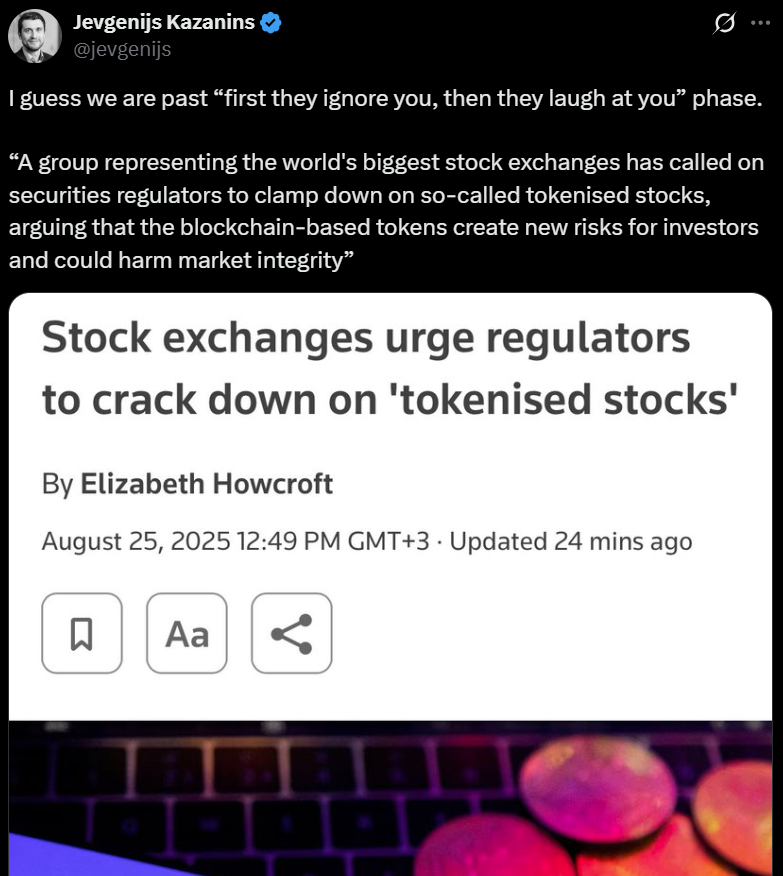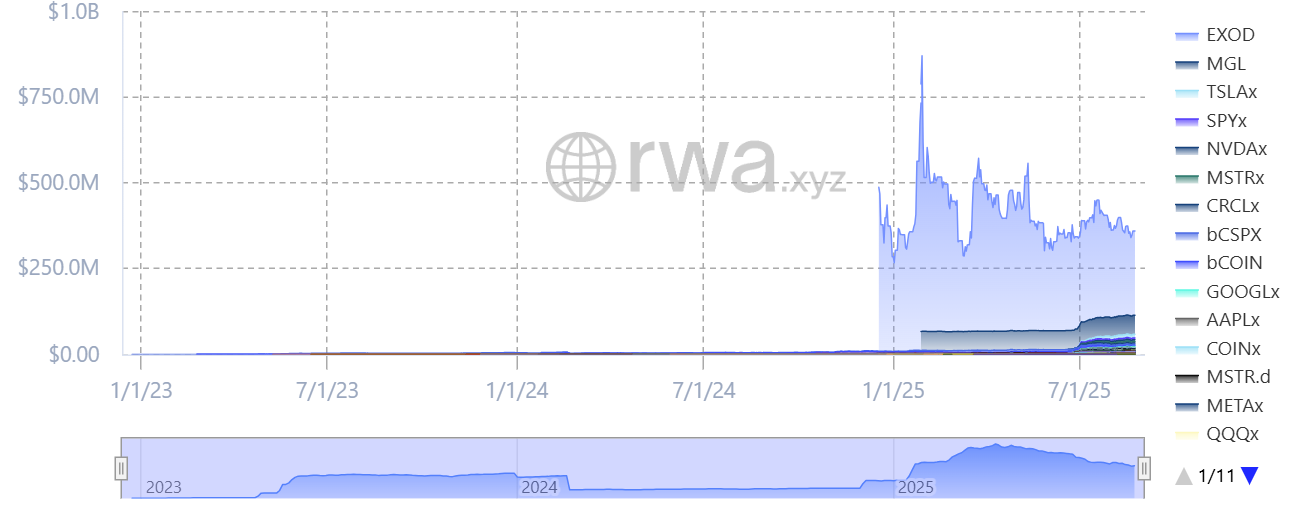Tokenized stocks are digital representations of traditional equities on a blockchain that can mimic ownership but often lack full investor protections. ESMA, IOSCO and the World Federation of Exchanges warn the SEC to tighten oversight to reduce custody, disclosure and counterparty risks for retail investors.
-
Regulators urge stricter oversight of tokenized stocks to protect investors.
-
Tokenized assets exceed $26 billion; tokenized stocks remain a small but growing subset.
-
Major market bodies — ESMA, IOSCO and WFE — told the SEC they “mimic” equities yet lack built-in market protections.
Tokenized stocks face regulatory scrutiny as ESMA, IOSCO and WFE urge the SEC to tighten oversight; read concise analysis, risks and next steps from COINOTAG.
What are tokenized stocks and why are regulators alarmed?
Tokenized stocks are blockchain-issued digital tokens intended to represent shares in public companies. Regulators including ESMA, IOSCO and the World Federation of Exchanges warn these tokens often do not convey legal shareholder rights, raising custody, disclosure and counterparty risk for investors.
Industry data shows the broader tokenized-assets market has passed $26 billion, though tokenized equities are a small slice of that total. Reuters reported the joint letter to the US SEC Crypto Task Force urging enhanced oversight.

Source: Jevgenijs Kazanins
How do tokenized equities differ from traditional stocks?
Tokenized equities can mimic price exposure to shares but typically do not embed shareholder rights such as voting or claim on corporate actions. Market associations say these products are often marketed as equivalent to stocks “when they are not.” This distinction drives the push for regulatory clarity and enforcement.
Regulatory bodies referenced include the European Securities and Markets Authority (ESMA), the International Organization of Securities Commissions (IOSCO) and the World Federation of Exchanges (WFE). Their concerns focus on disclosure, custody, settlement and the legal enforceability of token-holder claims.
What risks do investors face with tokenized stocks?
Key investor risks include:
- Custody risk: token holders may not control underlying legal title to shares.
- Counterparty risk: tokens may rely on issuer promises rather than legal share registration.
- Disclosure gap: token issuers may not meet securities disclosure standards.
The WFE warned of a growing number of brokers and crypto platforms offering “stock tokens” that are marketed as equivalent to equities. Reuters has documented the signatories’ letter urging action by the SEC Crypto Task Force.

Tokenized stocks account for a tiny fraction of the $26.5 billion tokenized securities market. Source: RWA.xyz
When did regulators begin pushing for oversight?
European and global securities bodies intensified scrutiny in mid-2025, culminating in a formal letter to the US SEC Crypto Task Force. This is part of a broader global trend to align tokenization with existing securities rules and investor-protection frameworks.
At the same time, US regulators signaled openness to tokenization in principle. SEC Chair Paul Atkins described tokenization as an “innovation” to advance, while SEC Commissioner Hester Peirce emphasized compliance with existing securities laws.
Frequently Asked Questions
Are tokenized stocks the same as owning a share?
Not always. Many tokenized stocks provide price exposure but do not confer legal shareholder rights such as voting or dividends unless explicitly structured and registered to do so.
How should investors evaluate tokenized equity offers?
Review legal documentation, confirm whether tokens represent registered shares, assess issuer custody arrangements, and check disclosure standards. Seek regulated custodianship and legal confirmation of shareholder rights.
Key Takeaways
- Regulatory pressure: ESMA, IOSCO and WFE have urged the SEC to tighten oversight of tokenized stocks.
- Investor risk: Tokenized equities can lack legal shareholder protections, increasing custody and counterparty risk.
- Market outlook: Tokenization remains promising for efficiency, but regulators demand clarity before mainstream adoption; market participants should prioritize transparency and compliance.
Conclusion
Regulatory scrutiny of tokenized stocks is intensifying as global authorities press the SEC to close legal and disclosure gaps. Market participants and investors must seek transparent structures that preserve shareholder rights while embracing tokenization’s efficiency. COINOTAG will monitor developments and publish updates as regulators respond.